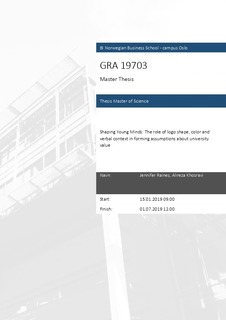| dc.description.abstract | As student mobility has increased worldwide, so has competition among
universities. In order to attract the attention, and tuition fees, of prospective
students, universities must make a good first impression, which relies on having a
strong, positive brand image. However, limited empirical research has been
conducted on branding that is specific to the higher education market. Research
suggests that students typically desire a university that is both highly competent in
meeting their educational needs and provides a warm environment in which they
will feel comfortable. This paper explores how visual and verbal cues that suggest
competence or warmth can be used in university branding in order to optimize
prospective students’ impressions of a university’s value. Our findings suggest
that the dimensions of competence and warmth can be most reliably
communicated through textual content, but that the colors (and to a lesser extent,
shapes) used in university advertising can also play a role. They also suggest the
presence of multiple competence cues result in a university being perceived as
more valuable than a combination of warmth and competence cues. While further
research is needed in this field, these results have immediate managerial
relevance. They suggest that universities looking to increase their perceived value
among prospective students should add more competence cues to their
advertising, especially in the form of text that highlights the school’s rankings,
reputation, commitment to research, and quality of faculty. However, universities
should be cautious around increasing tuition fees in response to such increases in
perceived value. Our research suggests that expected tuition is not directly
correlated with perceived value. | nb_NO |
